Damian Hirst and NFTs: Redefining Art's Future

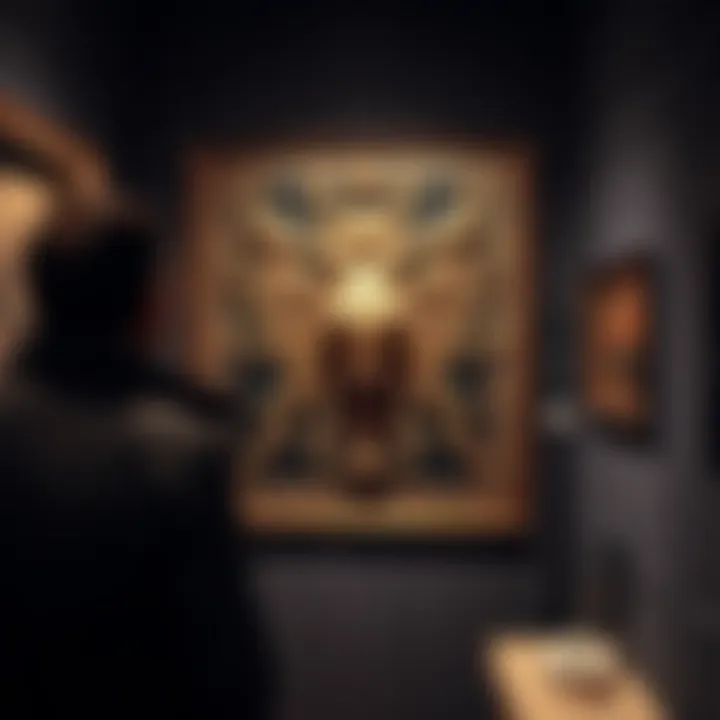
Intro
The synergy between traditional art and digital innovation has led to transformative phenomena in the creative landscape. Among the vanguards of this evolution is Damian Hirst, a name synonymous with boundary-pushing concepts in the art world. His exploration of non-fungible tokens (NFTs) signals a paradigm shift — where the conventional paradigms of value, ownership, and artistic expression are being reassessed amidst the digital clamor.
In recent years, NFTs have made headlines, disrupting not just the art market but also our understanding of what constitutes art itself. Hirst's entry into this space provides a concrete illustration of how traditional artists can adapt to, and shape, the burgeoning digital landscape. It’s an exciting, if somewhat bewildering, time as these developments unfold.
This article aims to navigate the complexities of Hirst’s relationship with NFTs, delving into market trends, price fluctuations, and how digital assets serve as a new canvas for artistic expression. We’ll also explore the implications of this intersection on the art market at large, offering insights that discerning audiences like collectors, investors, and art enthusiasts should consider as we forge ahead into this uncharted territory.
Damian Hirst: A Brief Overview
The impact of Damian Hirst on the contemporary art scene is akin to a brushstroke on a canvas; it’s both profound and lasting. His foray into the world of art has not only shaped individual perspectives but has also set a benchmark for innovation. This section paints an essential backdrop for understanding how Hirst's ventures into NFTs resonate within a broader context of art and technology.
Background and Artistic Journey
Born in 1965 in Bristol, United Kingdom, Hirst's early life was peppered with influences that would eventually reflect in his work. Famed for his provocative pieces that challenge norms, his journey is marked by a keen interest in the themes of mortality and existence. After studying at the Goldsmiths College, Hirst cemented his position in the art world during the 1980s and 1990s with works such as "The Physical Impossibility of Death in the Mind of Someone Living", where a shark was preserved in formaldehyde.
His artistic evolution didn't just stop at physical art; he has consistently pushed boundaries, exploring various mediums, from painting to sculpture and beyond. Hirst's work often reflects a fascination with life and death, encapsulated in various forms that draw viewers in. This blend of visceral drama with philosophical underpinnings compels audiences to engage deeply with his art, making his transition into the digital realm intriguing. By seamlessly marrying traditional and contemporary methods, Hirst lays the groundwork for understanding his engagement with NFTs.
Major Contributions to the Art World
Damian Hirst is often credited as a significant figure in the YBA (Young British Artists) movement, known for his audacious and controversial approaches. One of his key contributions to the art market is the idea of the artist as brand. Hirst’s unapologetic marketing strategies, particularly through public auctions, have redefined how artworks are perceived and valued.
Furthermore, he has pushed discussions about authenticity and ownership within the art community. His decision to sell works via auction without reserves illuminated the volatility and speculation inherent in art. Notably, Hirst's auction of pieces in 2008 marked a critical point, as art began to be viewed through the lens of investment and speculation rather than mere appreciation.
Through these canvases of innovation, Hirst lays the foundational thoughts that ripple through the nexus of art and technology today, especially as he enters the NFT space. His ability to prompt conversations around value and ownership extends far beyond traditional confines, setting the stage for new players in the art world—and paving the way for the digital art revolution driven by NFTs.
"Art is a part of something larger, and its value is continuously redefined as we interact with it in new formats."
As the narrative unfolds, exploring these elements provides critical insights into why Hirst's contributions remain indispensable for grasping the present-day dynamics of art market and the leap into NFTs.
Understanding NFTs: Key Concepts
In exploring the rich tapestry that connects Damian Hirst with non-fungible tokens (NFTs), it's crucial to first grasp the foundational concepts of NFTs themselves. This section dissects the relevance and significance of understanding NFTs to fully appreciate their role in contemporary art and the disruptive nature they embody in the traditional art world.
NFTs are more than just digital tokens; they are a revolution aimed at defining ownership in the digital realm. Each NFT is unique and cannot be exchanged for another NFT on a one-to-one basis, which fundamentally differentiates them from cryptocurrencies like Bitcoin or Ethereum. Unlike traditional art that hangs on a gallery wall, NFTs exist on an immutable ledger that is accessible to anyone with an internet connection. This democratization of art ownership and accessibility is precisely what prompts many artists, including Hirst, to delve into this new frontier.
Definition and Functionality of NFTs
When we talk about NFTs, we dive into a multifaceted definition that encompasses uniqueness and authenticity. NFTs are digital assets verified using blockchain technology, allowing them to carry proof of ownership and origin. These assets can represent artwork, music, videos, or even tweets! Just imagine owning a digital artwork that is one-of-a-kind, and the moment you purchase it the blockchain captures the transaction, forever linking it to you.
How do they work? It's pretty straightforward:
- Creation: An artist mints an NFT by converting their work into a digital format.
- Ownership: The NFT is stored on a blockchain, making ownership publicly verifiable.
- Marketplace: Buyers can trade these tokens on various platforms like OpenSea or Rarible, often at prices that can skyrocket based on demand.
This unique structure gives NFTs their value and appeal, particularly for collectors interested in scarcity and authenticity in an age where digital replication is a dime a dozen.
The Technology Behind NFTs: Blockchain
Now, proceeding to the technology that underpins this entire concept: blockchain. At its core, blockchain is a decentralized digital ledger that records transactions across many computers. Why does this matter? The decentralization means no single entity controls the database, making it a secure way to confirm ownership and provenance. In the art world, where authenticity is king, this technology serves as a beacon of transparency.
Key characteristics of blockchain technology include:
- Transparency: Every transaction is visible to anyone with access, reducing fraud.
- Security: Transactions are encrypted and can't be altered retroactively, ensuring data integrity.
- Decentralization: No middleman is needed, thus reducing fees and associated costs.

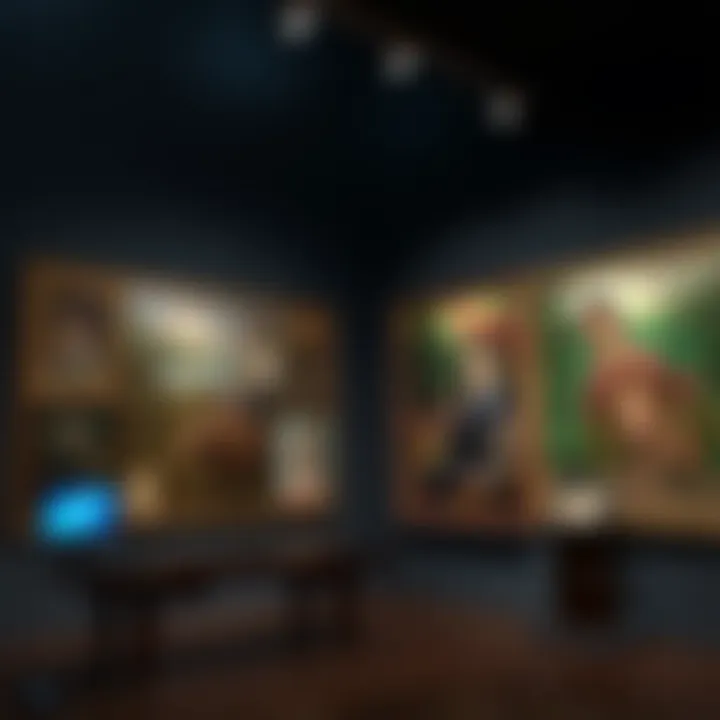
Artists like Damian Hirst are leveraging these traits to shift how art is perceived, stored, and sold. Hirst's approach to creating NFTs merges traditional artistic expression with modern technology, showcasing how innovative thinking can foster new paradigms in an age-old industry.
"The concept of ownership has evolved dramatically, especially with the advent of digital currencies and NFTs, and understanding NFTs helps reshape how we value art in today's society.”
To wrap it up, comprehending NFTs, alongside the technology that powers them, sets the stage for discussions surrounding Hirst's significant contributions to this space. It positions readers to better appreciate the disruptions arising from this blend of creativity and technology, ultimately reshaping the future of artistic expression.
The Convergence of Art and Technology
The evolving partnership between art and technology is reshaping the landscape of creativity. This junction, infused with digital innovations like non-fungible tokens (NFTs), creates a fertile ground for artists like Damian Hirst to explore. By using NFTs, artists have direct access to audiences, effectively bypassing traditional galleries and auction houses. This democratization of the art world holds profound implications for how art is created, sold, and, importantly, appreciated.
How NFTs Revolutionize Art Distribution
NFTs fundamentally alter the way art is disseminated. Hirst’s entry into this realm exemplifies this transformation. In the past, artists primarily relied on intermediaries—galleries, collectors, and auction houses—to promote their work. Now, NFTs enable artists to mint their artwork as digital assets, providing them ownership over their creations in a manner previously not possible. This shift allows here-and-now accessibility for collectors who might never step foot in a physical gallery.
For instance, Hirst's projects, such as the "The Currency" collection, integrate digital ownership and physical art, inviting buyers to either keep their NFT for future value or exchange it for the corresponding physical piece. This creates a unique opportunity for collectors, allowing them to engage directly with art on their own terms.
The approach reveals new revenue streams for artists, who can earn a percentage from secondary sales as their NFTs change hands. This model redefines the relationship between artists and collectors, giving them both more leverage and, eventually, more satisfaction.
"NFTs form a bridge between traditional collectors and a new generation; it’s the best of both worlds, a blend of physical and intangible."
Challenges Faced by Traditional Art Institutions
Yet, this convergence bears its fair share of trials. Traditional art institutions find themselves at a crossroads, grappling with the rapid changes that NFTs represent. The digital art market, riding the wave of blockchain technologies, might seem foreign to long-standing galleries steeped in classic traditions. As more artists like Hirst embrace the NFT space, institutions must adapt or risk becoming irrelevant.
Several key challenges loom:
- Valuation Difficulties: The pricing models for digital art via NFTs do not align neatly with the traditional valuation methods. How does one put a price on a digital piece that can be reproduced instantly?
- Authenticity Concerns: While blockchain provides undeniable proof of ownership, the question of authenticity in digital art remains complex. Originality in a world of perfect copies can confuse collectors and undermine inherent value.
- Environmental Impact: As consolidation around certain blockchain platforms intensifies, concerns regarding their ecological footprint have surfaced. Institutions that advocate for sustainability may feel conflicted supporting a medium perceived as damaging to the environment.
In summary, the confluence of art and technology embodies both vast potential and significant challenges. Artists like Damian Hirst are at the helm of this transformative wave, but the traditional art world must evolve—perhaps dramatically—to maintain relevance in this digital age.
Damian Hirst's Entry into the NFT Space
Damian Hirst's venture into the world of non-fungible tokens represents a pivotal moment in the crossroad between contemporary art and digital innovation. As a figure who has long been at the forefront of the art scene, Hirst’s engagement with NFTs fosters a deeper conversation about authenticity, ownership, and value in art. This topic is not simply another trend; it underscores how artists can leverage technology to redefine their work and build new audiences.
Hirst's Key NFT Projects
One of Hirst's notable projects in the NFT realm is The Currency series, which combines physical artwork with digital tokens. In this initiative, he produced 10,000 unique artworks on sheets of paper, each corresponding to a specific NFT. Collectors were then given a choice: keep the physical piece or the NFT. This duality highlights the conflict many face in choosing between tangible and digital assets. Remarkably, the success of this project sheds light on how collectors perceive value in the art world today.
Another significant project is Gods of the Future, which illustrates Hirst's perspective that the digital format can serve not just as a replication but as a unique experience in its own right. By collaborating with technology and exploring the characteristics of the blockchain, he challenges the traditional norms of art, prompting discussions around scarcity and authenticity.
Some key features of Hirst's NFT projects include:
- Conceptual Depth: Hirst doesn't just create NFTs for profit; there's a philosophical underpinning prompting viewers to reflect on the nature of ownership.
- Interactive Engagement: Through his NFT projects, Hirst brings collectors into an participatory role, where their choices impact their connection to the artwork.
- Market Influence: His presence in the NFT space spurred interest, bringing conventional collectors into a realm they may have previously overlooked.
Artist's Perspective on Digital Ownership
From Hirst's perspective, digital ownership is about more than merely possessing a virtual asset; it symbolizes a shift in how we conceive art itself. He has expressed that the progression from physical to digital art is not diminishing the value of traditional masterpieces, rather enhancing the discourse around what art can be. Through NFTs, artists gain a medium to establish direct relationships with their audience. This relationship can foster flexibility and new revenue models, empowering artists in ways that were previously constrained by traditional gallery systems.
Hirst's view encourages both artists and collectors to rethink their understanding of value. The dialogue surrounding digital ownership raises questions about how we define what is truly unique in the digital age. While traditional art carries an intrinsic value often linked to its physicality, NFTs allow for broader interpretations of what ownership means.
"Digital ownership is a reset, a breath of fresh air for artists who can finally step outside the confines of the system. It’s about leading a revolution rather than following a trend."
Impact on the Art Market
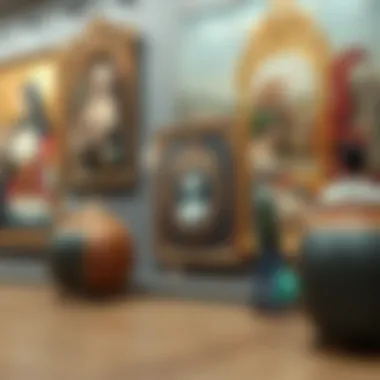
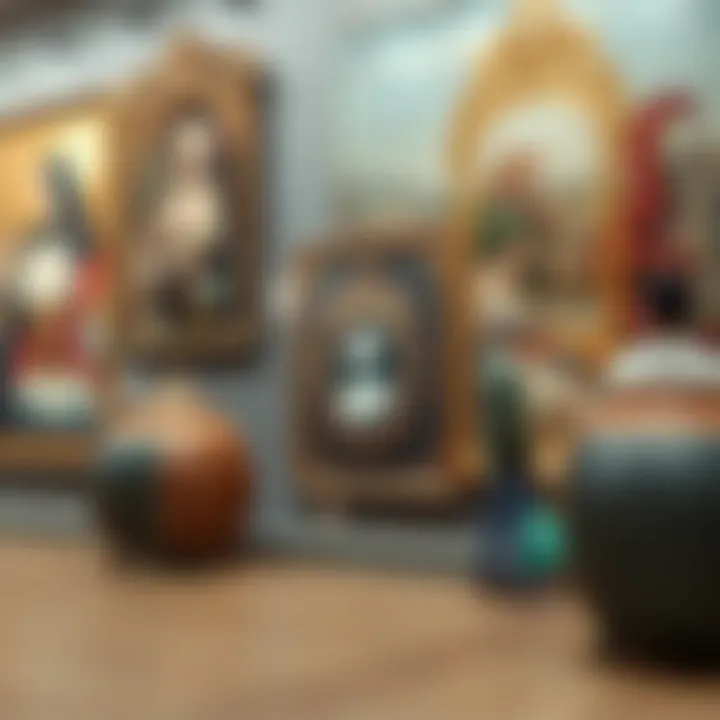
The impact of Damian Hirst's exploration of NFTs on the art market is immense and multifaceted. Not only does it represent a new avenue for artistic expression, but it also reshapes how we understand value, collectibility, and ownership in art. Amidst a landscape rapidly evolving through technology, Hirst’s foray into the NFT space forces traditional art institutions to reassess their roles and the frameworks through which they operate.
Changing Perceptions of Value in Art
One of the most striking changes occurring in today's art market is how value is perceived. Traditionally, value in art has relied on factors such as rarity, historical significance, and an artist's reputation. However, NFTs are assuaging this notion, as they introduce new variables that can heavily influence how art is appraised.
For instance, with each NFT transaction, the actual price can widely fluctuate based on trends, market sentiment, and even memes circulating on social media. Hirst’s pieces, particularly those encapsulated in NFT formats, exemplify this shift. His series "The Currency" has turned the age-old question of value on its head, as buyers weigh the physicality of art against the allure and potential of digital ownership.
The demand for such digital tokens often stems from the perceived scarcity that NFTs offer. Yet, this raises questions about intrinsic versus extrinsic value. While something like a painting might be valued for its artistry and emotional resonance, a digital token could be valued merely for speculation and demand. Such evolving sentiments compel collectors and investors alike to rethink what they consider valuable in art.
The Role of Speculation in NFT Sales
Speculation has a prominent role in current NFT sales, especially in relation to Damien Hirst’s initiatives. Hirst's work often garners attention not only due to its artistic merit but also because of the momentum it creates in the NFT marketplace. The community surrounding his NFTs drives demand and engagement, leading to what can resemble a speculative bubble.
In many cases, buyers are investing not only in art but in the hope that they can sell these tokens later at an inflated price. According to insights gleaned from various art market analysis platforms, NFT investors frequently look for profits that can be considerable and quick. It's akin to betting on a horse; there are winners and losers, but the race attracts substantial interest and gambling.
However, the speculative nature of the market also poses significant risks. Many investors might find themselves left holding the bag when the hype subsides, underscoring the volatility of NFTs. The potential for massive gains often attracts those who may not fully grasp the nuances of art collection, thus saturating the market with ill-informed buyers.
"As digital art proliferates, the line between art appreciation and speculative investment becomes increasingly blurred, forcing a reflection on the essence of what constitutes art itself."
Critiques and Controversies
The ongoing fusion of Damian Hirst's artistic vision and the world of non-fungible tokens inevitably brings forth a slew of critiques and controversies. This pivotal aspect is essential in understanding how these two domains interact and influence one another. As artists like Hirst venture into the NFT landscape, their work doesn't just challenge traditional forms of art; it instigates a broader conversation about ethics, the environment, and the very nature of artistic integrity.
Concerns Over Environmental Impact
One of the most pressing issues surrounding NFTs, and particularly in the context of Hirst’s blockchain endeavors, is the environmental footprint associated with the technology. The majority of popular NFT platforms rely on Ethereum, a blockchain that has come under scrutiny for its energy-intensive proof-of-work system. Critics argue that creating and trading NFTs contributes to significant carbon emissions, triggering a ripple effect of ecological worries.
"The environmental impact of NFTs isn’t just a mere footnote; it’s a headline grabber that demands attention. As artists, we’re not isolated from our choices."
Gallery owners and eco-conscious artists alike express concern over how digital creations can sometimes come at a price far greater than the artwork itself. The irony does not escape many—an artist who aims to provoke thought may inadvertently fuel a broader ecological crisis with their NFT creations.
The stakes are higher in the age of climate change. Hirst’s advocates argue he has potential to pave a path forward, balancing innovation with sustainability. One potential solution resides in
- Layer 2 Solutions: These newer technologies can allow transactions to occur while significantly lessening energy consumption.
- Switching to Proof of Stake: This method, adopted by Ethereum 2.0, promises much lower emissions, ensuring that digital art can reconcile its artistic aspirations with environmental responsibility.
Authenticity vs. Copying in the Digital Space
While embracing the digital canvas, the concept of authenticity takes on an entirely new set of challenges in the NFT domain. Traditional art has conventions concerning originality; as Hirst ventures into NFTs, these customs intertwine with the intricate web of digital replication. The very nature of digital art allows for countless copies of an image or video file to exist, raising the question—what makes an art piece truly authentic?
In the same breath, Hirst's digital works emphasize ownership yet remain susceptible to appropriation. For instance, the unique features of an NFT may provide legitimacy in terms of ownership record, but one could argue that the visual aspect is still at risk of being copied and distributed without consent.
Duplication, or perceived imitation, weighs heavily on Hirst’s reputation and the broader market. The blend of technological ease and artistic integrity chews through familiar territory in a new light, resulting in paradoxical pressure on artists.
Some key points in this debate include:
- The Role of Smart Contracts: These differentiate the owner from mere spectators and can dictate how copies are managed.
- The Artist's Intent: The conversation around whether an artist like Hirst can maintain authenticity amid widespread reproduction.
The challenges of authenticity in the NFT scene are profound. They may affect not just Hirst’s work but the entire future trajectory of digital art. The scrutiny surrounding these issues could very well determine whether or not these concepts find acceptance in both the traditional and digital art realms.
Future Trajectories in Digital Art
The realm of digital art, particularly within the context of non-fungible tokens (NFTs), is evolving at a breakneck pace. Understanding the future trajectories in this area is essential not just for artists, but also for collectors, technologists, and investors. The integration of NFTs in digital art challenges traditional concepts of ownership and value, and sheds light on evolving market dynamics. With this evolution, new opportunities arise, alongside significant contributing factors that need careful consideration.
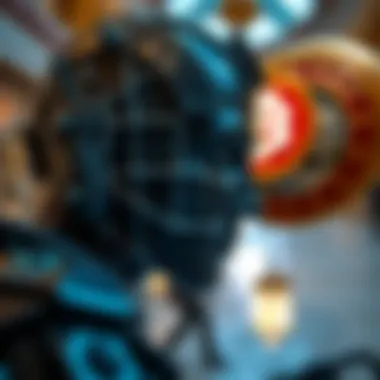

Potential Developments in NFT Technology
As the technology underpinning NFTs becomes more sophisticated, several potential developments could reshape the landscape of digital art. Decentralization continues to be a key focus, enhancing artist control over their work while minimizing intermediary influences. Smart contracts, for instance, have the power to automate and enforce royalty payments every time an artwork is sold.
Imagine a scenario where an artist's digital creation is not just a one-off sale but continues to generate income over time. This could create a sustainable economic model, ensuring creators are compensated fairly.
- Interoperability is another buzzword gaining traction. The ability to transfer NFTs across various platforms seamlessly would empower artists to reach wider audiences without being confined to a single marketplace. For instance, a digital painting uploaded on a specific platform can be showcased in virtual galleries elsewhere, broadening visibility and encouraging cross-community engagement.
- Moreover, enhancements in user experience can potentially broaden the appeal of purchasing NFTs. Platforms are likely to prioritize making transactions more intuitive and less technical, attracting those who may be hesitant or intimidated by the existing crypto landscape. These developments can solidify digital art's position in the broader art ecosystem.
What This Means for Future Artists
For emerging and established artists alike, NFTs represent not only new mediums but also a transformation in how art is perceived and monetized. Creators must be prepared to navigate this uncharted territory, understanding that their role is evolving. It’s not just about creating art anymore; one must also become savvy in digital marketing and blockchain technologies.
- The elimination of traditional gatekeepers—the galleries and auction houses—means artists can connect directly with their audiences. This shift allows for greater expression and a diversification of artistic voices that were previously marginalized.
- Additionally, artists have the chance to innovate in their art forms. Digital tools and platforms paved the way for creations that were unimaginable in a physical context. Future art could blend immersive technologies like augmented reality, creating experiences rather than mere objects.
Ultimately, the incorporation of NFTs signifies a radical shift towards a more democratized art scene. Artists now have the power to define their paths, interact with their buyers, and establish their legacies in ways unthinkable just a few years ago. As we look ahead, it's crucial to embrace this change while remaining vigilant about ethical considerations, accessibility, and sustainability in the art world.
"The future belongs to those who believe in the beauty of their dreams." - Eleanor Roosevelt
The intersection of technology and creativity is bound to redefine artistic norms as new generations of creators emerge, ready to take on the myriad possibilities presented by this digital frontier. Thus, understanding these trajectories is vital for anyone involved or interested in the artistic landscape of the future.
The Broader Cultural Implications of NFTs
The rise of non-fungible tokens (NFTs) marks a monumental shift in how art is perceived, owned, and valued. Not only does this technology offer artists, including Damian Hirst, a new canvas for creativity, but it also opens doors for discussions about ownership in the digital age. Understanding the broader cultural implications of NFTs goes beyond mere transactions; it dives into the very essence of what it means to be a creator and a collector in today's world.
Shifts in Ownership and Collectibility
NFTs are revolutionizing the concept of ownership in the art sphere. Traditionally, owning a piece of art meant possessing a physical object. However, with the advent of digital assets, ownership now resides more in the realm of virtual authenticity. This transition brings several key considerations:
- Decentralization of Art: Ownership is moving away from galleries and auction houses to individuals. Art is now being sold directly from artists to collectors through platforms like OpenSea and Rarible. This shift reduces intermediaries and allows more diverse voices in the art community.
- Provenance and Authenticity: The blockchain technology underpinning NFTs provides a transparent record of ownership, making it difficult for counterfeit pieces to co-exist. An artist's digital signature on the blockchain is a badge of authenticity that collectors can trust.
- Democratization of Art Collecting: Digital art allows collectors from various backgrounds and financial standings to participate. You no longer need to be a millionaire to buy original art; smaller pieces can be purchased at lower prices, enabling many to engage in the collector experience.
Such changes pose profound questions about what constitutes value. When fluid ownership replaces static possession, how do we measure the worth of art? It leads us to ponder if value lies in material or digital presence.
Crossover of Art and Entertainment Industries
The intersection of NFTs with the entertainment industry presents exciting opportunities and challenges. As artists like Hirst embrace NFTs, they’re not only producing artwork but also creating multimedia experiences that merge visual art with other forms of entertainment.
- Collaboration: Cross-industry partnerships are on the rise. Musicians and digital artists are collaborating to create unique NFT collections combining music with visuals. This not only broadens their audience but also fosters community engagement.
- New Revenue Streams: Digital art can be bundled with music, gaming, and virtual reality experiences, creating new revenue avenues. Artists can release exclusive content—be it songs, virtual concert tickets, or behind-the-scenes footage—alongside NFTs, thus enhancing the collector's experience.
- Cultural Relevance: The fusion of art and entertainment highlights cultural narratives in clear ways. Artists can comment on sociopolitical issues or current events through their digital creations, bridging the gap between art as a medium for expression and entertainment as a means of engagement.
"Through this blend of art and entertainment, we might see the emergence of a new cultural lexicon that speaks to our digital society."
The conversion of these two worlds creates a new landscape for engagement and interaction, challenging the traditional barriers that separated them previously. As this crossover evolves, it becomes clear that NFTs not only redefine ownership but encourage a collaboration that enriches the cultural dialogue.
Epilogue: Reflecting on Hirst and the NFT Ecosystem
The intersection of Damian Hirst and the rapidly evolving landscape of NFTs offers a compelling narrative that reshapes our understanding of art in this digital epoch. Hirst, often seen as a provocative figure in contemporary art, has brought a unique perspective to the world of non-fungible tokens. This synergy not only illustrates the transformative power of technology but also sparks dialogues regarding the definitions of ownership and value within the art realm.
Summarizing the Impact of Hirst on NFTs
Hirst’s journey into NFTs is not merely a cash grab; it reflects a deeper commentary on art's relationship with authenticity and ownership. By leveraging blockchain technology, he provides collectors with a new way to engage with art. His projects, like "The Currency," help demonstrate how art can live both in physical and digital spaces. Here are some key impacts:
- Redefining Ownership: Hirst's artwork in the form of NFTs challenges traditional concepts of art ownership. Unlike physical pieces that can only belong to one person at a time, NFTs enable fractional ownership, allowing multiple investors to stake claims on a single work.
- Altered Market Dynamics: The blurring lines between digital and physical assets impact how art is valued. In platforms like SuperRare or OpenSea, art can be bought, sold, or traded in ways that were inconceivable a few decades ago, flipping traditional auction house practices on their head.
- Cultural Significance: Hirst's foray into NFTs amplifies the ongoing conversation surrounding digital art's legitimacy. His position as a renowned artist lends credibility to the medium, encouraging wider acceptance in both mainstream and critical art circles.
The Future of Art in a Digital Age
As we glance toward the horizon, the future of art appears to be intertwined with technological advancements, presenting opportunities as well as challenges.
- New Avenues for Artists: The digital age allows aspiring artists to skip traditional gatekeeping models. Artists gaining visibility through social media and NFT marketplaces can directly connect with their audience, fostering a decentralized art ecosystem.
- Integration with Other Technologies: Innovations like augmented reality and artificial intelligence pave the way for immersive art experiences. Hirst’s work could further explore interactive elements through these technologies, making art more accessible and engaging.
- Evolution of Art Criticism: With the rise of NFTs, art criticism will likely evolve as well. Critics may need to adjust their frameworks to evaluate not just aesthetic qualities but also the tech underpinnings and cultural implications of digital works.
"Art is never finished, only abandoned." – Paul Valéry
In summary, Hirst’s engagement with NFTs exemplifies how contemporary artists navigate these changes, pushing boundaries and inviting iteration in ways traditional formats cannot accommodate. Whether for the investor, collector, or casual observer, understanding this shift is crucial for the future of art itself.



